Post-Apocalyptic Worlds
Post-apocalyptic settings depict the moment civilization on Earth as we know it is about to collapse, or has collapsed. Here are a few of the many factors that can cause it:
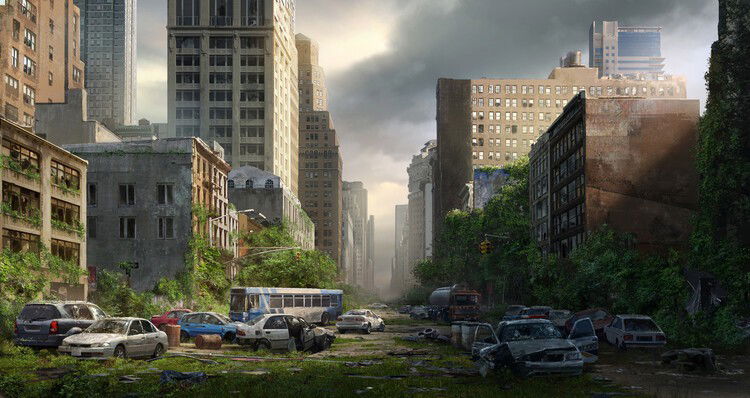
In movies, post-apocalyptic worlds usually happen because of a catastrophic event, like a nuclear war, a global pandemic, a natural disaster, or a U.F.O. invasion.
Survivors, genetically mutated or not, try to survive in this harsh environment at any cost.
That's the premise of 51st State, the board game!
Game Info
51 State is best played with 2 to 4 players, ages 10 and up, by designer Ignacy Trzewiczek. It was illustrated by Mateusz Bielski e Mariusz Gandzel.
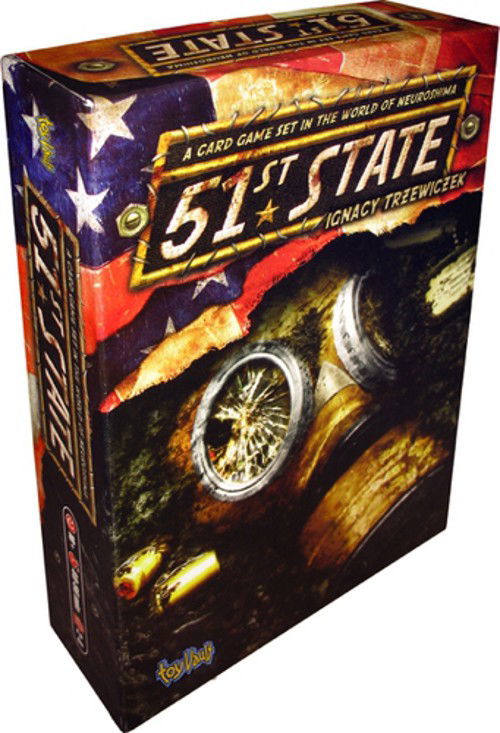
It was released in 2010 by Portal Games. Its main mechanics include: hand management, and variable player powers.
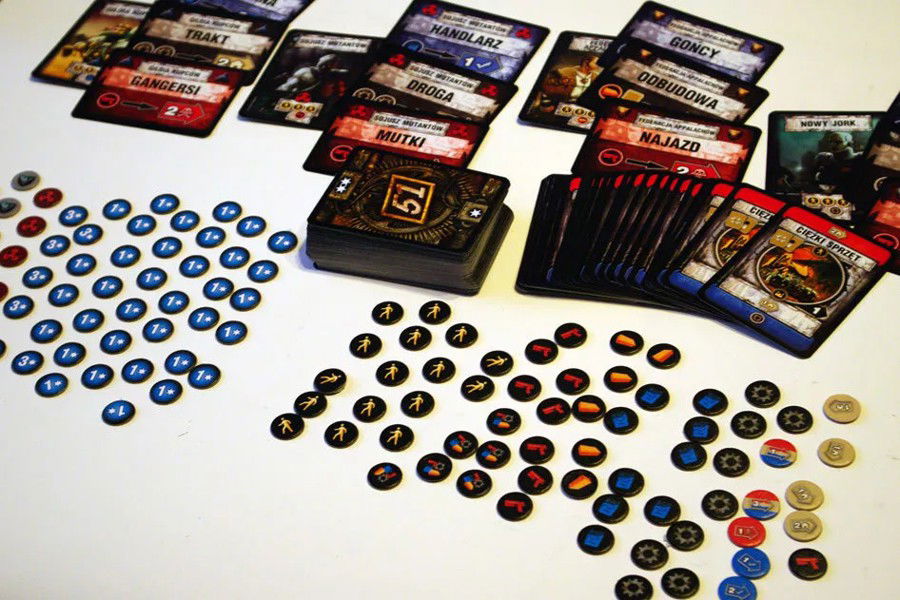
Its designer, Ignacy Trzewiczek, has designed over 160 games, including Robinson Crusoé, Imperial Settlers, Stronghold, and Neuroshima Tactics, which, by the way, is set in the same universe as 51st State.
In 2011, one year after it was released, it was nominated twice for Best Card Game: once by JoTa and once by Golden Geek.
The Game
The world as you know it no longer exists. There is no government. No army. No civilization. The U.S.A. has collapsed. And now, 30 years after the war began, new powers have finally tried to take control of this country in ruins. They aim to establish a new order to try to take control over the territory and create a new country, a new State: the 51st State.
That's our premise!
In this game, you're part of one of the 4 surviving factions, and they're all unique:
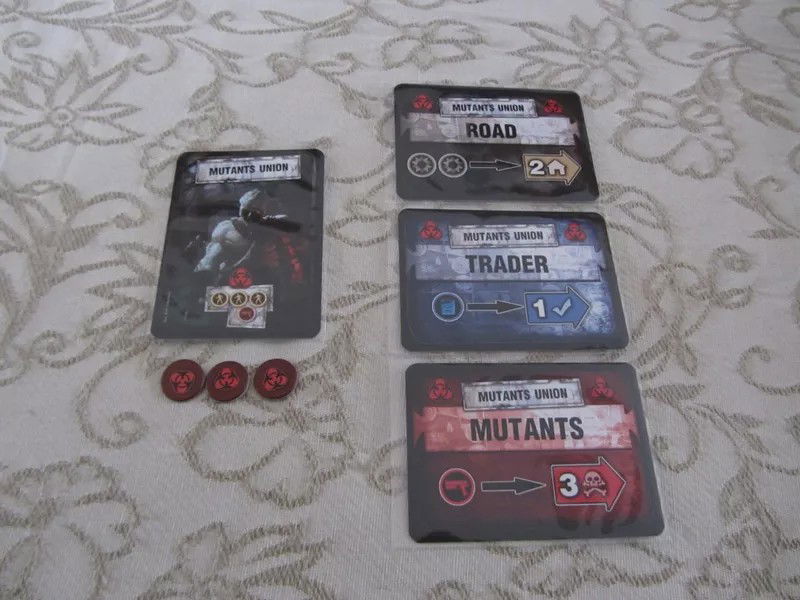
Before you start playing, pick your faction, get your respective base card, 3 contact cards, and draw 4 other faction markers.
Contact cards let you play cards from your hand, use your actions, and get the game going. They, alongside your faction's unique ability, let you do 3 different types of actions:
According to the type of contact card you use, you'll use one of the 3 parts of the other cards you'll play. These 3 parts each have a different color that represents the type of contact card you're using:
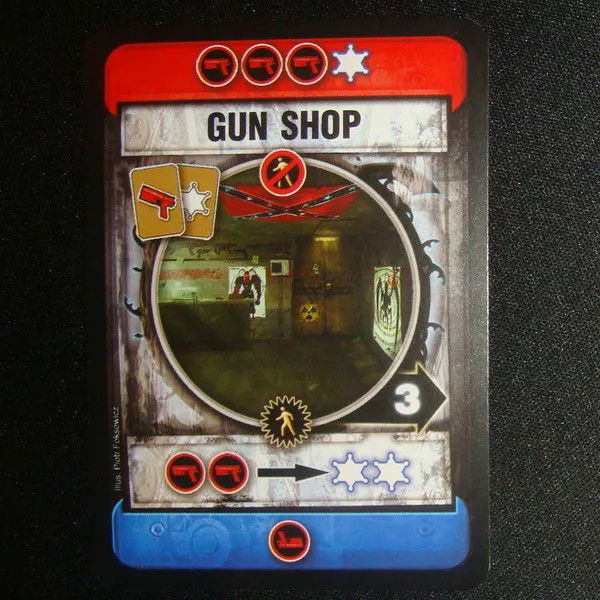
A turn in this game includes 5 Phases:
In Phase 1, you'll set 5 new cards set on the table, and each player will, clockwise, take one card they want to play later on - that is, when they use it to put other cards in their hand in play.

Phase 2 is crucial. It will give us resource tokens so we can play our actions. We'll get these resources, in turn, from our Agreements, Spoils, and any Incorporated locations that produce them.
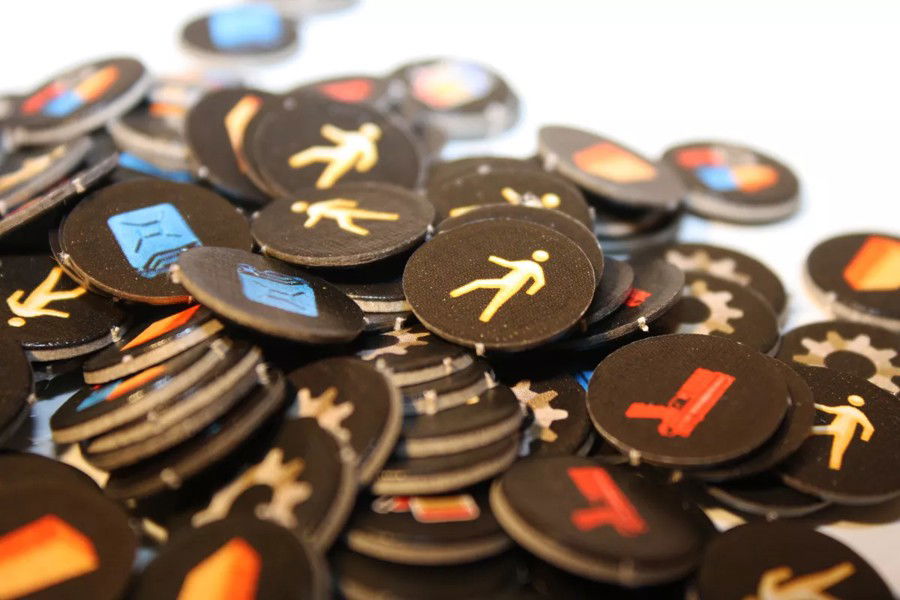
As for Phase 3, that's when we'll decide where and how we'll spend our resource tokens. We'll use our 12 possible actions to get more victory points.
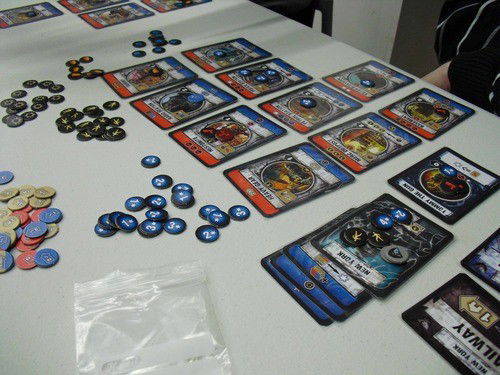
The 12 available actions we can use do a lot. Here are a few examples:
You'll count your victory points in Phase 4. Just add the points you got on your faction card, your Incorporated locations, and your leader card.
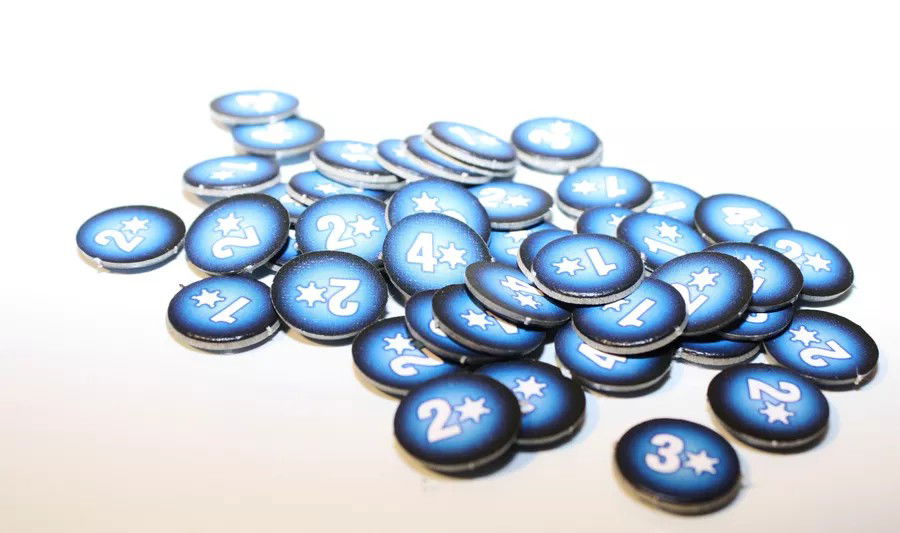
One interesting thing that the game designer added is the Victory Point track. That's where you'll track your victory points, as the name suggests. It is located at the bottom of the game box.
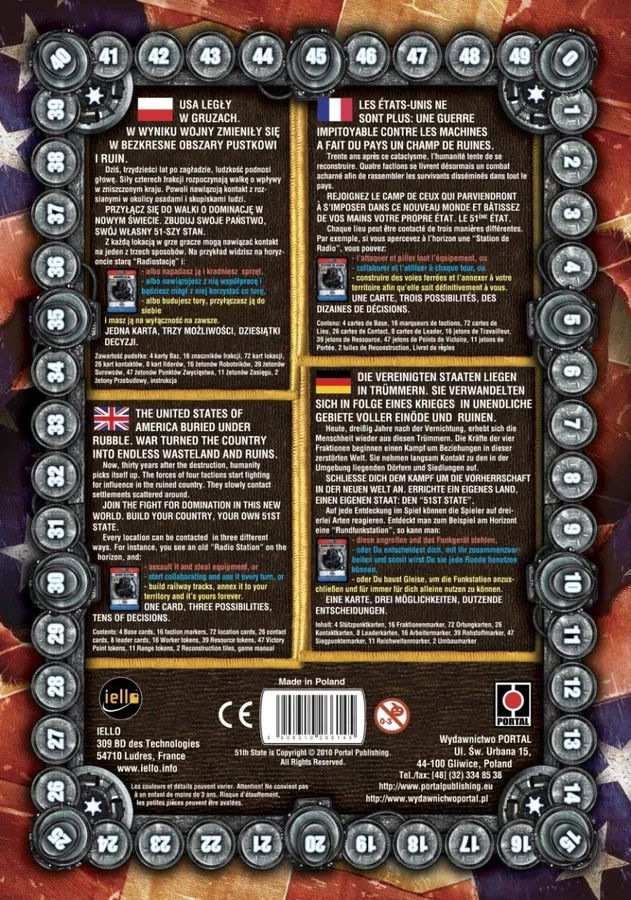
After you count your victory points, it's time for Phase 5, the cleanup phase. In this phase, each player will return their resource tokens, both the ones they used and the ones they didn't, to their owners.
Game End
If, on Phase 4, that is, when you count your victory points, one of the players gets 30 or more victory points, that turn will be your last. You'll play Phase 5, clean up, and the player with the most victory points wins.
If two or more players are tied, the player with the most cards in hand wins. If there is still a tie, the player with the most unused resources and workers is the winner. If there is still a tie, players share the victory.
Strategy and Tips
I, particularly, love games set in post-apocalyptic worlds, so 51st State was right up my alley. To me, the game starts as soon as you pick the factions you want to play.
There are two possible scenarios: one is, the first player gets all 4 factions, picks the one they want, passes the rest to the player to their left, and so on and so forth. Or, you really throw it to chance and all players get a random faction. That way, you'll have to adapt your game plan to the faction you get. These two options are incredible to me because in both cases you'll have to adapt and create a different strategy depending on the faction you get.
Another interesting detail is that, in Phase 1, the lookout phase, you'll have to select the cards you want from the board. So, consider each card thoroughly, that is, if you can play it easily, and the bonus you'll get with it. Take all of that in consideration.
You might even think, "oh, so I'll need luck for everything?", and that if you only get bad cards you'll lose, etc… That is true, but, the game mechanics, that is, the 12 possible actions you can do, can mitigate bad luck because one of them lets you recycle the cards in your hand. So, don't complain: you can use anything in a post-apocalyptic world!
In Phase 3, the action phase, use each action logically, that is, first create more resources and then use them on other cards and/or locations, yours and your opponents'. If you don't plan your actions well, you'll run out of resources fast.
If you follow these tips, the only thing left to do is use your unique abilities (from each faction) well. You'll risk losing the game if you ignore that ability in favor of a bold strategy that only works in your head. Each faction ability, in its own way, makes the game easier, and that's why they're there.
Use your best strategy, each unique faction ability, and win a game of 51st State!
Unboxing, Rules, and Gameplay Videos
Check out this Unboxing:
Learn the rules:
Watch some gameplay:
Teaching Moments
If you're looking for a survival game that encourages you to work on your logic skills and is highly strategic as well as immersive, 51st State is perfect for you.
If you're looking for something more casual, you can turn your victory points into survival points. This will change everything and encourage everyone to work on their skills as they play. Everyone will be able to refine their logic skills, as they'll need to get resources before using them. As the game goes on, everyone will learn something new!
Then, as a result, many of you will already start creating strategies, such as playing a certain card to get the resources you need, or the points you need to win the game.
In addition, this game was beautifully illustrated. It is very immersive, and the cards, besides gorgeous, show exactly what a post-apocalyptic world can look like.
If you wish so, you can take this chance to speak to your friends and family about the dangers of exhausting the Earth's natural resources, and how important it is to preserve nature. All you need is some imagination.
51st State is a lot of fun, and teaches us a lot about logic, strategy, and managing resources!
See you next time!








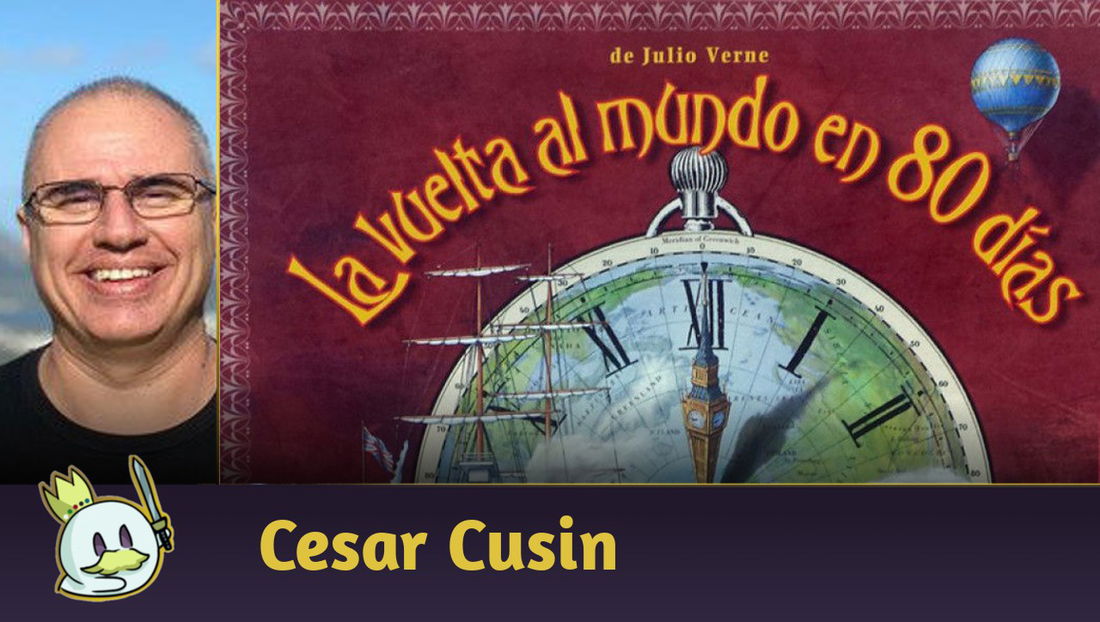




— コメント 0
, 反応 1
最初にコメントする